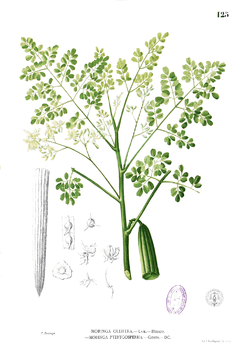Behenic acid
 | |
| Names | |
|---|---|
| IUPAC name
Docosanoic acid | |
| Other names
Behenic acid, Docosanoic acid; 1-Docosanoic acid; n-Docosanoic acid, n-Docosanoate, Glycon B-70, Hydrofol Acid 560, Hydrofol 2022-55, Hystrene 5522, Hystrene 9022, Prifrac 2989, C22:0 (Lipid numbers) | |
| Identifiers | |
| 112-85-6 | |
| 3D model (Jmol) | Interactive image |
| ChEBI | CHEBI:28941 |
| ChEMBL | ChEMBL1173474 |
| ChemSpider | 7923 |
| ECHA InfoCard | 100.003.646 |
| EC Number | 204-010-8 |
| KEGG | C08281 |
| PubChem | 8215 |
| UNII | H390488X0A |
| |
| |
| Properties | |
| C22H44O2 | |
| Molar mass | 340.59 g·mol−1 |
| Appearance | White to yellowish crystals or powder |
| Melting point | 80.0 °C (176.0 °F; 353.1 K)[1] |
| Boiling point | 306 °C (583 °F; 579 K) |
| Hazards | |
| NFPA 704 | |
| Except where otherwise noted, data are given for materials in their standard state (at 25 °C [77 °F], 100 kPa). | |
| | |
| Infobox references | |

Behenic acid (also docosanoic acid) is a carboxylic acid, the saturated fatty acid with formula C21H43COOH. In appearance, it consists of white to cream color crystals or powder with a melting point of 80 °C and boiling point of 306 °C.
Sources
At 9%, it is a major component of Ben oil (or behen oil), which is extracted from the seeds of the Ben-oil tree (Moringa oleifera). It is so named from the Persian month Bahman, when the roots of this tree were harvested.[2]
Behenic acid is also present in some other oils and oil-bearing plants, including rapeseed (canola) and peanut oil and skins. It is estimated that one ton of peanut skins contains 13 pounds (5.9 kg) of behenic acid.[3]
Properties
As a dietary oil, behenic acid is poorly absorbed. In spite of its low bioavailability compared with oleic acid, behenic acid is a cholesterol-raising saturated fatty acid in humans.[4]
Uses
Commercially, behenic acid is often used to give hair conditioners and moisturizers their smoothing properties.[3] It is also used in lubricating oils, and as a solvent evaporation retarder in paint removers. Its amide is used as an anti-foaming agent in detergents, floor polishes and dripless candles. Reduction of behenic acid yields behenyl alcohol.
Pracaxi oil (from the seeds of Pentaclethra macroloba) is a natural product with one of the highest concentrations of behenic acid, and is used in hair conditioners.
See also
References
- ↑ "Lexicon of lipid nutrition (IUPAC Technical Report)". Pure and Applied Chemistry. 73 (4): 685–744. 2001. doi:10.1351/pac200173040685.
- ↑ http://www.numericana.com/answer/culture.htm
- 1 2 USDA Scientists Find Treasure in Peanut Skins.
- ↑ Caterm, Nilo B and Margo A Denke. January 2001 Behenic acid is a cholesterol-raising saturated fatty acid in humans. American Journal of Clinical Nutrition, v 73, No. 1, pp41-44..
